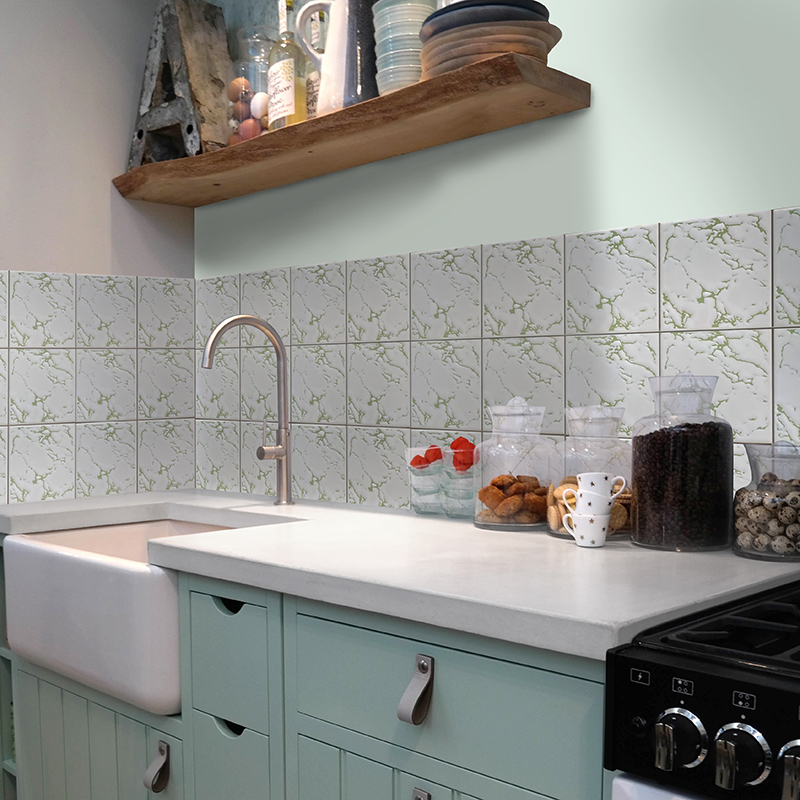The story of a tile called chicken


The story of a tile called chicken
In celebration of Heritage month, we look back at one of the most popular designs we have ever produced, both here in South Africa and our sister company in the UK. This distinctive tile is often referred to as the chicken tile, but how did it come about?
The story begins in the UK when a designer, Mr Woolley, created a veined pattern for a range of tiles. These tiles were first produced in that country in the early 1970s, then later brought to South Africa. As was the norm at the time, the pattern was silkscreened onto the bisque (1st firing) tile, in a type of ‘resist’ print. The glaze was then applied, and because it did not stick to the print, the textured vein effect was created. Due to limitations in production techniques at the time, this meant that all the tiles were identical. Mr Woolley had intended that the tiles should be installed randomly to create a veined marble effect, but this was not how things turned out.
Within the veined pattern, people could see the faint outline of a chicken and from the outset, tilers would carefully study each tile and place them so that all the chickens faced the same way and so the ‘chicken tile’ was born.

Many homes across the UK and South Africa had these iconic tiles in their bathrooms and kitchens, which were available in a range of colours ranging from pink to green, lilac, blue and brown. Today, some homes still have a ‘retro’ styled room with these distinctive tiles in place, a testament to the quality of the tile, and its enduring pattern.

Life doesn’t always go the way we plan. Mr Woolley certainly never intended to create the chicken tile, but this little piece of history is now part of the heritage of the Johnson Tiles brand and is something that we are proud to share.